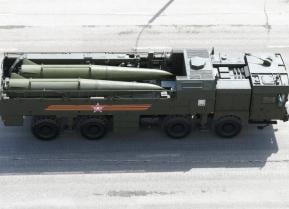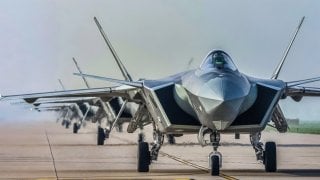China's J-20S Stealth Fighter Explained in 3 Words
At the 15th China International Aviation and Aerospace Exhibition in Zhuhai, China's People's Liberation Army Air Force unveiled the twin-seat variant of its Chengdu J-20 Mighty Dragon stealth fighter, known as the J-20S. This aircraft is the world's first twin-seat fifth-generation stealth fighter intended for combat roles rather than training.
A Total Beast: At the 15th China International Aviation and Aerospace Exhibition in Zhuhai last week, China's People's Liberation Army Air Force unveiled the twin-seat variant of its Chengdu J-20 Mighty Dragon stealth fighter, known as the J-20S. This aircraft is the world's first twin-seat fifth-generation stealth fighter intended for combat roles rather than training.

-The J-20S is designed for missions including electronic warfare, suppression of enemy air defenses, and controlling unmanned aerial systems as Loyal Wingmen. A leaked photo revealed a sophisticated cockpit with an "intelligent control hub" to reduce pilot workload.
-The airshow also featured a brief aerial performance by China's J-35A carrier-based stealth fighter, highlighting the nation's advancements in aviation technology.
China Debuts Twin-Seat J-20S Stealth Fighter at Zhuhai Airshow
The People's Liberation Army Air Force's (PLAAF's) Mighty Dragon took to the sky on the opening day of the 15th China International Aviation and Aerospace Exhibition. The biennial airshow kicked off on Tuesday outside the city of Zhuhai in the Guangdong province – the first since Beijing lifted Covid-19 restrictions last year.

In the skies overhead, four Chengdu J-20S Mighty Dragon fifth-generation stealth fighters flew in a diamond formation, followed by radius turns, and a large attack angle ascends. A pair of the J-20S proceeded to land for ground displays.
It marked the official unveiling of the two-seat variant of the J-20 Mighty Dragon air superiority fighter, the only twin-seat fifth-generation stealth fighter currently in service. Produced by the state-owned Aviation Industry Corp of China (AVIC), it was touted to be "a heavy-duty radar-evading fighter jet with long-range operation and multifunctional capabilities."
A static version was on exhibit at the airshow, which offered a few more details about the twin-seat stealth aircraft.
Not a Trainer
Twin-seat aircraft are largely employed for pilot training, but the U.S. Air Force and U.S. Navy have operated two-seat multirole combat aircraft in electronic warfare and ground attack roles. AVIC was quick to note that the J-20S is not a trainer, and instead, it will serve as a combat aircraft.
In addition to electronic warfare, and suppression of an adversary's air defense systems, the J-20S could be employed to control or direct unmanned aerial systems (UAS), operating as Loyal Wingmen to the manned fighter.
"Chinese military experts, through state-affiliated media, have highlighted the introduction of this new version of the J-20, emphasizing its potential uses, which could range from controlling other platforms to electronic warfare missions, enemy air defense suppression, and intelligence, surveillance, and reconnaissance tasks in the Theater of Operations," Zona-Militar.com reported.
More J-20 Details Emerge
While Beijing wanted the Chengdu J-20 Mighty Dragon to have its moment in the spotlight, a bit more might have been revealed than planned. A leaked photo offered a detailed look at the aircraft's cockpit.

According to Bulgarian Military, the digital cockpit was optimized for intuitive operation, and was built around an "intelligent control hub," which utilized a multifunctional display where pilots could "manage weapons, navigation, and mission systems with minimal effort."
The report suggested that it "significantly reduces the pilot's workload, providing more time to focus on tactical mission execution."
Pulls Out All the Stops
The 15th China International Aviation and Aerospace Exhibition allowed Beijing to put its latest aircraft in the spotlight while highlighting the progress made by its aviation industry.
In addition to the J-20S, China's J-35A, the carrier-based variant of the FC-31, also took part in a brief aerial performance. It was a short debut for the highly-anticipated fighter, and the demonstration certainly left the audience (and analysts) wanting to see more.
China now becomes the second country after the United States to operate two distinct stealth fighters.
Author Experience and Expertise: Peter Suciu
Peter Suciu is a Michigan-based writer. He has contributed to more than four dozen magazines, newspapers, and websites with over 3,200 published pieces over a twenty-year career in journalism. He regularly writes about military hardware, firearms history, cybersecurity, politics, and international affairs. Peter is also a Contributing Writer for Forbes and Clearance Jobs. You can follow him on Twitter: @PeterSuciu. You can email the author: [email protected].
Image Credit: Creative Commons and/or Shutterstock.
From the Vault


